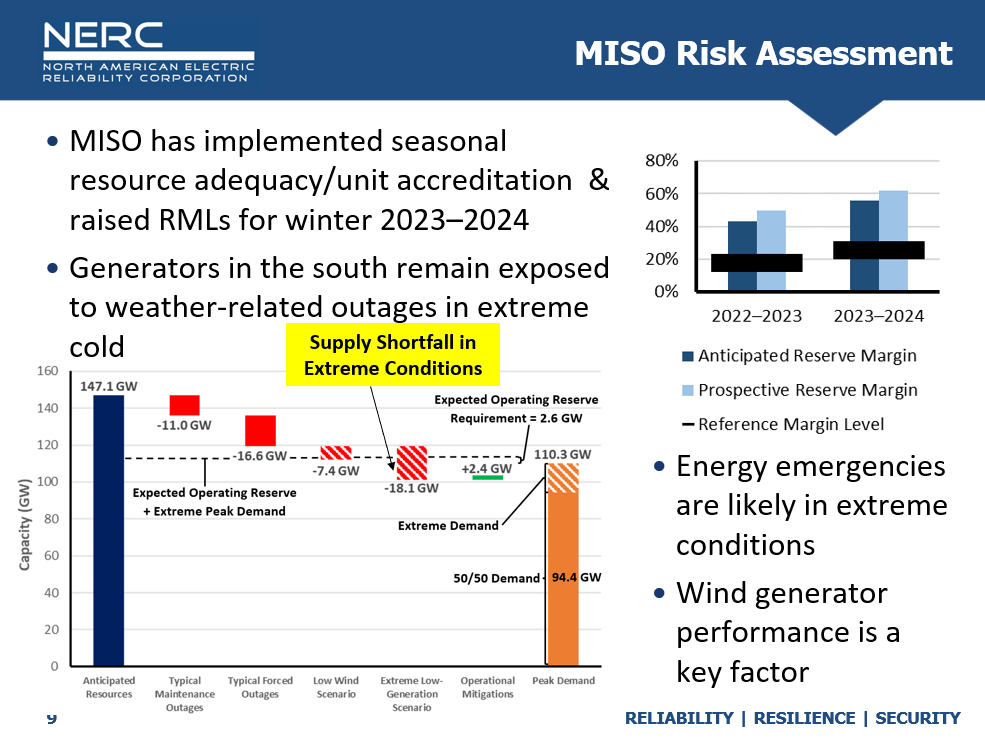A quick note on electric grid reliability this winter
The North American Electric Reliability Corporation (NERC)’s Winter Reliability Assessment has identified MISO as one of the areas at an elevated risk of capacity shortfalls, i.e. blackouts, if we experience higher-than-normal generator outages or above-average electricity demand.

My reading of a few NERC documents suggests that the largest factors affecting grid reliability will be fuel supply risks, demand forecasting, and real-time wind generation.
Fuel Supplies: We’ve seen that natural gas supplies are vulnerable to interruption during cold snaps (Winter Storm Uri in 2021 in Texas and Winter Storm Elliot in 2022 down south), but coal and nuclear plants store months of fuel onsite, making them less vulnerable, but not invulnerable, to fuel supply issues (coal piles can freeze, for example).
Demand Forecasting: An underestimation of demand due to the increased use of electricity for home heating (Elliot) caused demand to spike down south because they use more electricity for home heating than we do in Minnesota, where natural gas is the primary heating fuel. This means southern regions are the most at risk of demand exceeding supply in the short term because they don’t winterize as well as we do, and they have more electrically heated homes, but this will change in the future if Minnesota attempts to make significant gains in home heating electrification.
Wind Performance: Lastly, real-time wind performance can fluctuate pretty significantly based on the winter weather event. Wind turbines can operate well in the winter like they did during Winter Storm Elliot, or they can have an “80-hour wind drought” where the wind is operating below 10 percent of its potential output for 80 hours straight like MISO saw in 2020. The joker in the deck is temperature because NERC states that -21°F is the cutoff point for some wind farms to avoid mechanical damage, meaning they could be producing nothing

At the end of the day, we’ll probably be “ok” this winter on reliability, but things don’t look promising moving forward.
However, Xcel Energy’s decision to retire the 680 MW of coal-fired capacity at Sherburne County Unit 2 will increase the risk of capacity shortfall situations by making MN more dependent upon natural gas, wind, and solar output and imports from neighboring grids that may not have extra power to spare.